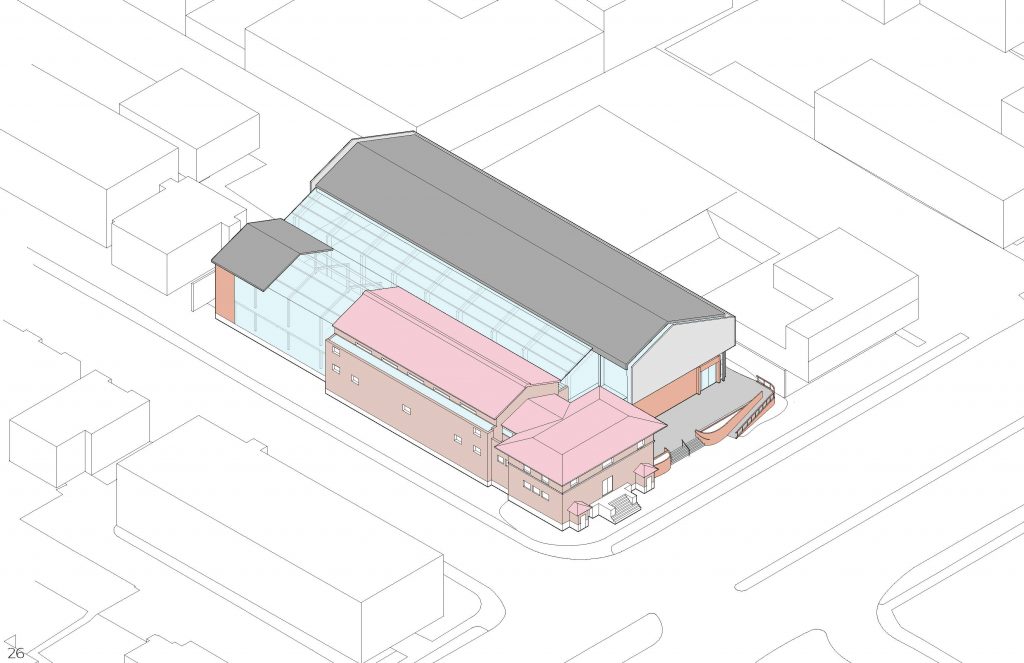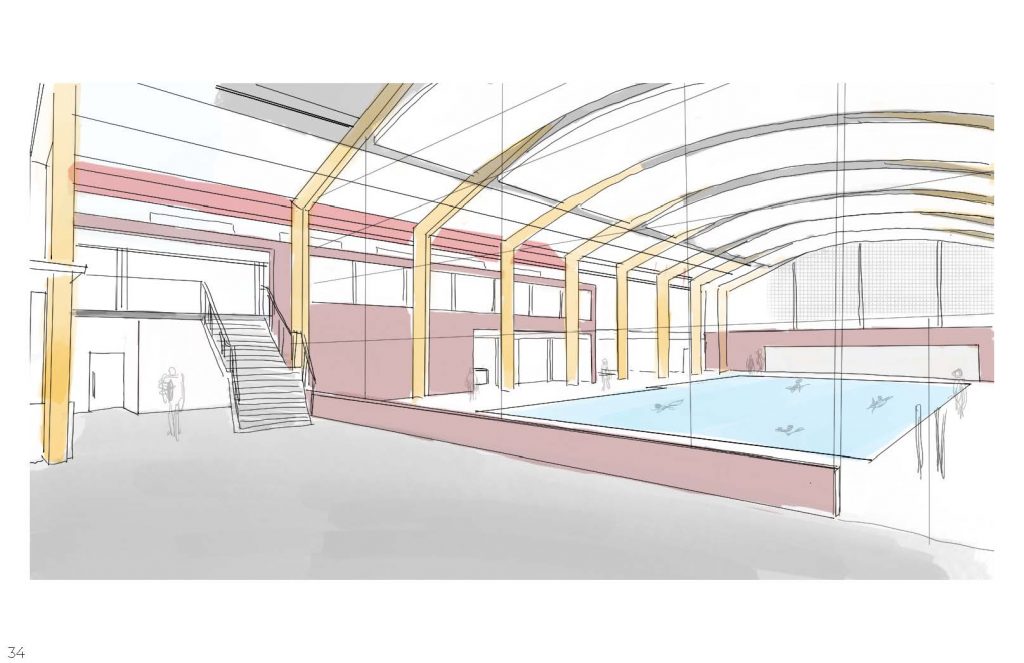Students produce designs to modernize community centres for City of Ottawa
September 11, 2022
In videos posted to YouTube, Mathieu Fleury, councillor for Ottawa’s Rideau-Vanier Ward, speaks enthusiastically about Carleton University student proposals for three neighbourhood community centres.
“I was very impressed with the various interventions and additions,” Fleury said recently. “Most of those projects are real projects that could really happen and now live in official city records. It puts a blueprint of what could be done and what needs to be done. That’s exciting.”

City Councillor Mathieu Fleury addressed students at the Architecture Building.
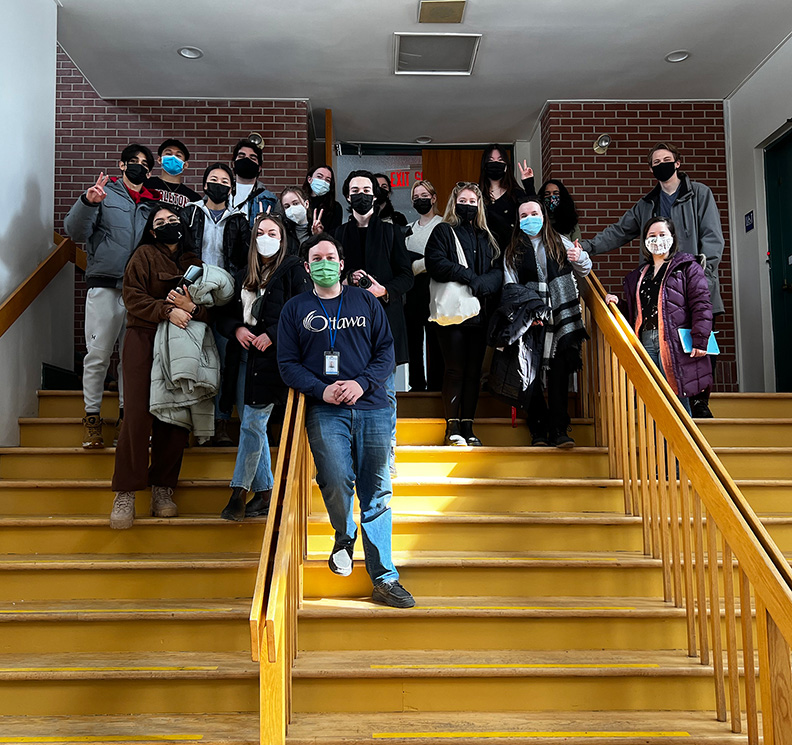
Students visited the three community centres.
The projects are by second-year students of the 2022 Winter Term in a studio organized by Associate Professor Janine Debanné. The request for student input first came from Fleury to Associate Professor Benjamin Gianni, who lives in his ward. Gianni put him in touch with Debanné.
The chance to work with real-world clients on existing buildings with contemporary needs was a wonderful opportunity amid pandemic limitations, recalls Debanné.
“As I planned the studio, I felt a strong impulse to give the students a grounded experience after a long period of remote learning,” she says. “The teaching team — John Cook, Eric Archambault and Santiago Guardia — agreed with me. The pandemic challenged architecture and urbanity in the deepest way. It felt it important to give the students the chance to visit physical places, to respond to clients, and to grapple with our dusty, dirty world.”
“Experiences like these enable me to practice a small part of what an architect does.”
– Alyssa Pangilinan
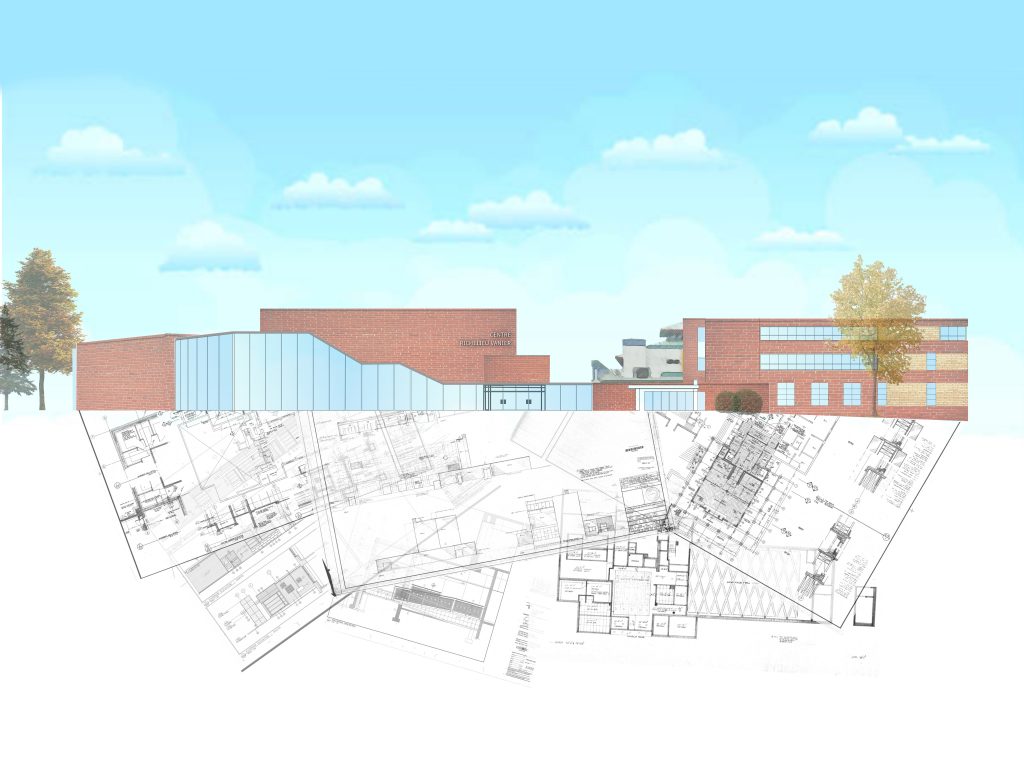
Richelieu-Vanier Community Centre, by Shoham Avigad
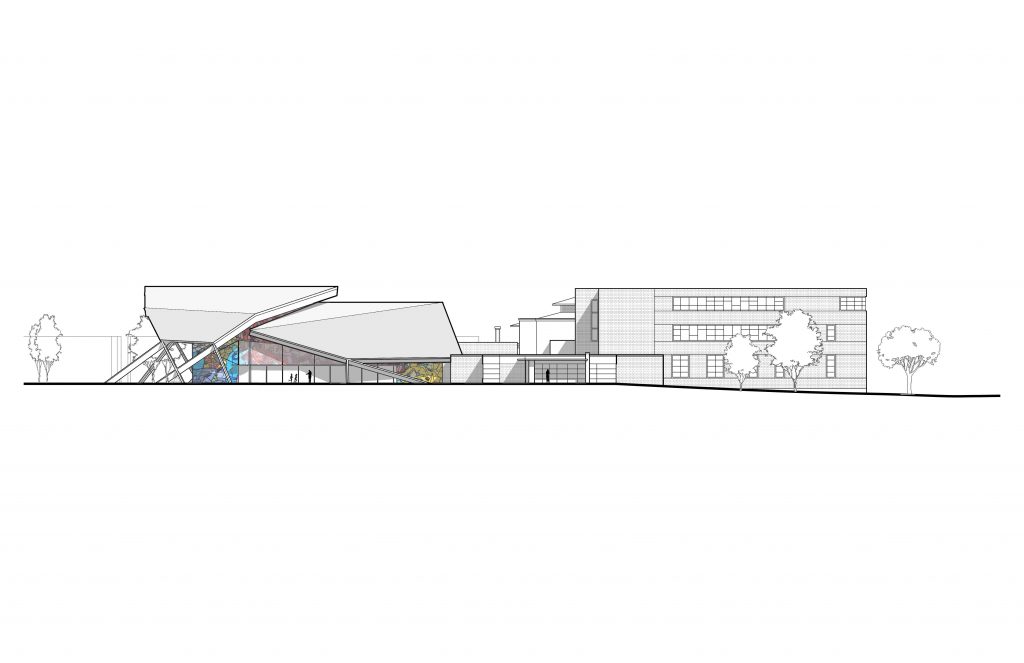
Richelieu-Vanier Community Centre, by Darion Dillabaugh
The assignment was to design additions for three aging community centres, animate the buildings with new uses and attract new audiences. Fleury observes that use by younger people is limited today by the lack of basketball courts and regulation-size swimming pools.
“We’re one of the oldest communities, one of the lowest-income, diverse, which means we have some of the oldest, least-performing facilities,” he says. “I did all that I could in policy work. What’s one way to leave something more direct? To me, that really moved into designs, looking at built form, looking at spaces, getting students to think about these spaces.”
Each of the 56 students worked on one of the community centres. Champagne Bath is a historic, much-loved building with a small pool on a street corner fronting on King Edward Avenue. Richelieu-Vanier Community Centre sits in open playing fields and already repurposes three structures built between the 1950s and 1980s. Sandy Hill Community Centre is a handsome 1960s building that steps down the hill at the intersection of residential streets, the University of Ottawa, and parkland.
Fleury described the challenges to students last March in the Pit at the Architecture Building. Students also visited the community centres, took photos, and interviewed patrons and operators.
“This project was a great opportunity to apply the importance and influence of context in my designs.”
– Helen Wang
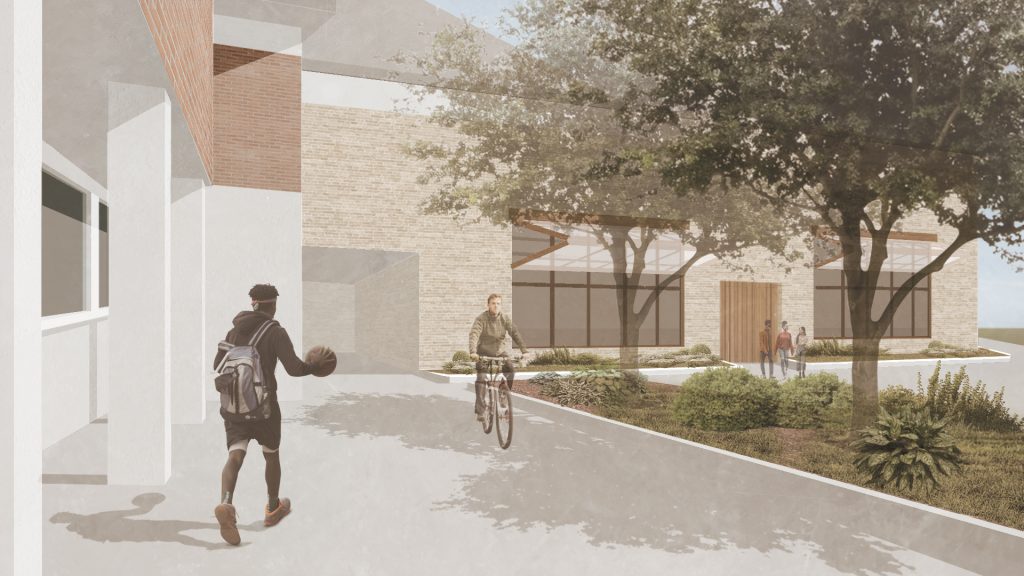
Sandy Hill Community Centre, by Helen Wang
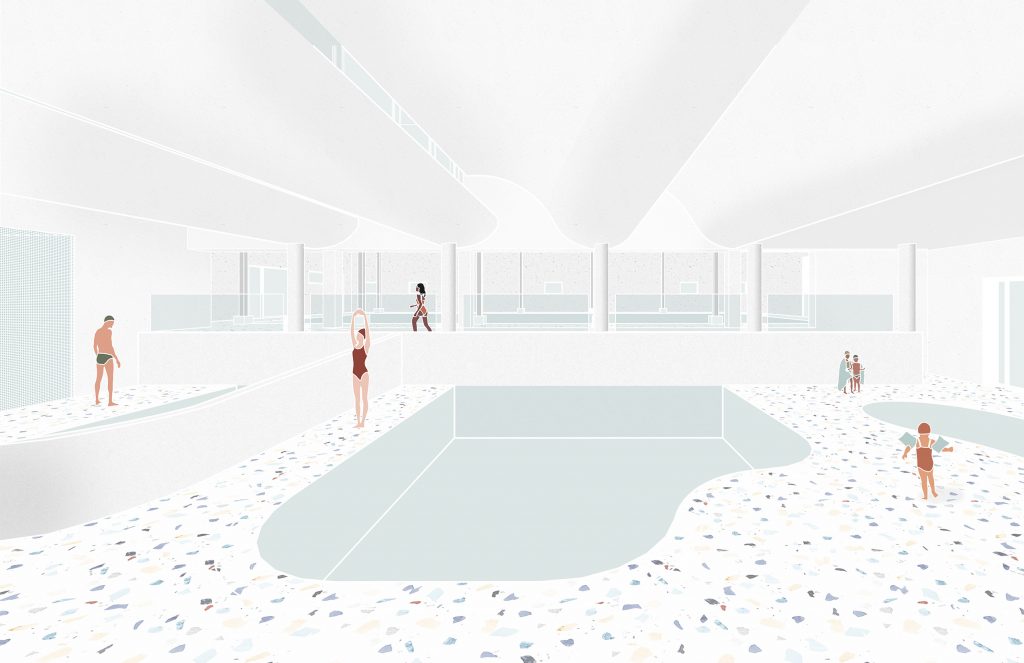
Champagne Bath Community Centre, by Jessica Villarasa
“This design project was especially exciting because it was an opportunity to work with a real site and a real program that needed to be implemented.”
– Amelia Kreager
“It was an eye-opening experience to be able to communicate directly with the community we were aiming to design these spaces for,” says student Sharmeen Rizvi.
“They provided us with lots of new perspectives and real concerns with the original buildings that they hoped our designs could address,” she says. “Having such a grounded, real-world setting to think about, the approach to my design was evolving with them in mind rather than just my own experimental aims.”
Students had to find ways to add the very significant built volumes required by pools and gyms while respecting the existing architecture and sites and proposing a welcoming contemporary identity.
“It was about finding play and excitement in adding a lowly big box inside of which was a regulation-size gym or pool,” says Debanné. “We focused on site plan, journey, tectonic dialogue with existing architecture, the meaning of community, and large-span structures.”
The studio title, Building on Community, captured the themes of addition and of community life.
The City of Ottawa will use the student proposals in a tangible way, says Fleury, noting that the city has prioritized a gymnasium expansion at Sandy Hill Community Centre. “The city planner overseeing that work is in contact with Janine, has all of documents prepared by the students, and is forming his RFP (Request-For-Proposals) to consultants based on some of that research.”
The student proposals can be used as examples of what the city is looking for, adds Fleury. “There’s a lot of work the students did in terms of material, in terms of lighting, in terms of connection, that should form the successful consultant’s work,” he says. “There’s an amazing baseline that the future consultants can build on.”
Champagne Bath and Richelieu-Vanier have also been identified as priorities for expansion but are awaiting funding. The students’ work is being used to help develop support for investment in these facilities.
“It was interesting to tour the neighbourhood on foot and imagine how we can enhance the Richelieu -Vanier Community Centre by taking with workers of the building.”
– Yiping Wang
Fleury is already talking to Debanné about their next collaboration, which concerns repurposing single-pad arenas.
“I know how often problems that we face in government can be solved by students and academia,” he says.
Watch the videos, titled Our recreational facilities re-imagined for modern use by Carleton University students:
“Creating an addition to a historic building rich in memories is an honour.”
– Jessica Villarasa
Yiping Zhan
Richelieu-Vanier Community Centre
The new additions are designed to attract youth and families through sports, ceremonies, and daily leisure. They include include a regulation-sized gym, changing areas, and complementary gathering spaces. A timber trellis design and frosted brick patterned glass link the old and new facades to maintain elements of the existing building.


Sharmeen Rizvi
Richelieu-Vanier Community Centre
This project adds a large gymnasium to the community centre. Large skylights and windows open the playing field to the outside world and reference architectural styles of the original building, notably the 1950s pavilion addition. Interior gardens provide leisure spaces around the gymnasium. Geometry, order, and structural frameworks enrich the design.
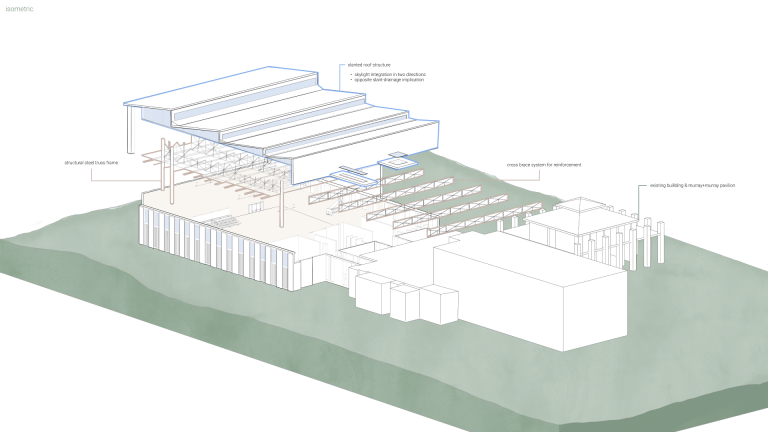

Amelia Kreager
Richelieu-Vanier Community Centre
The gymnasium is an extension of the existing community centre and will allow for events and sports. The design contains an art gallery/exhibition corridor for artists. This area acts as a transition space between new and existing structures. The floating façade was designed to coexist in harmony with the original building.
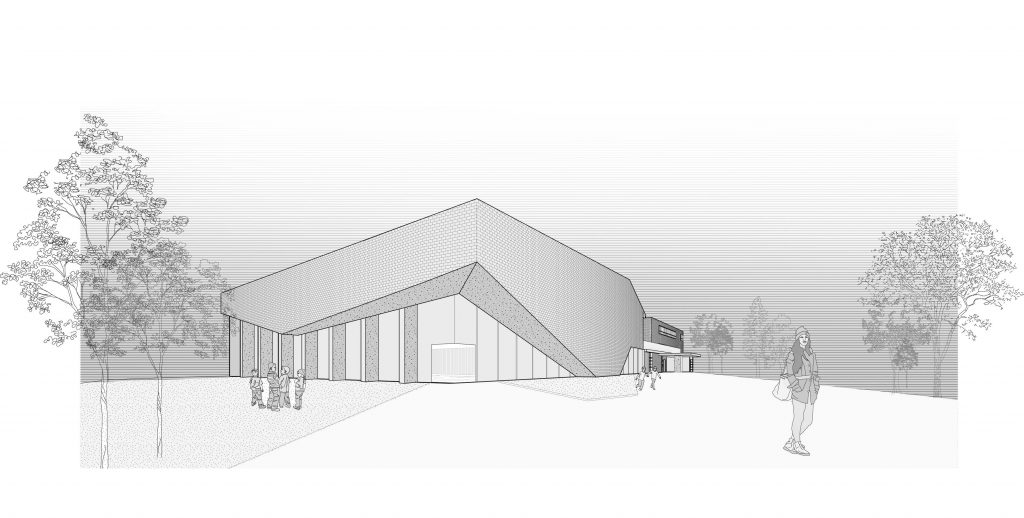
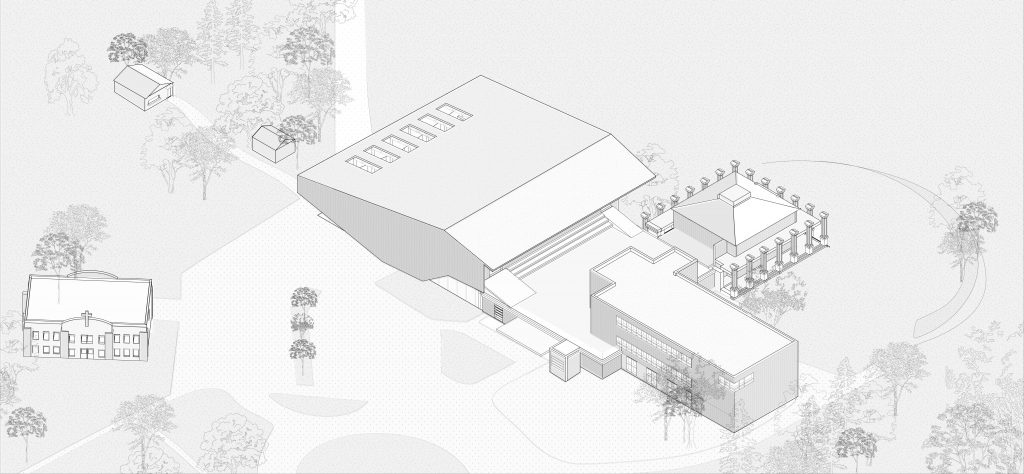
Darion Dillabaugh
Richelieu-Vanier Community Centre
The main idea was creating a soft transition from exterior to interior spaces. The addition hints at what is inside but keeps enough hidden to make visitors curious and want to approach. The roof was devised as a shell to conceal and reveal different parts of the colourful façade beneath.
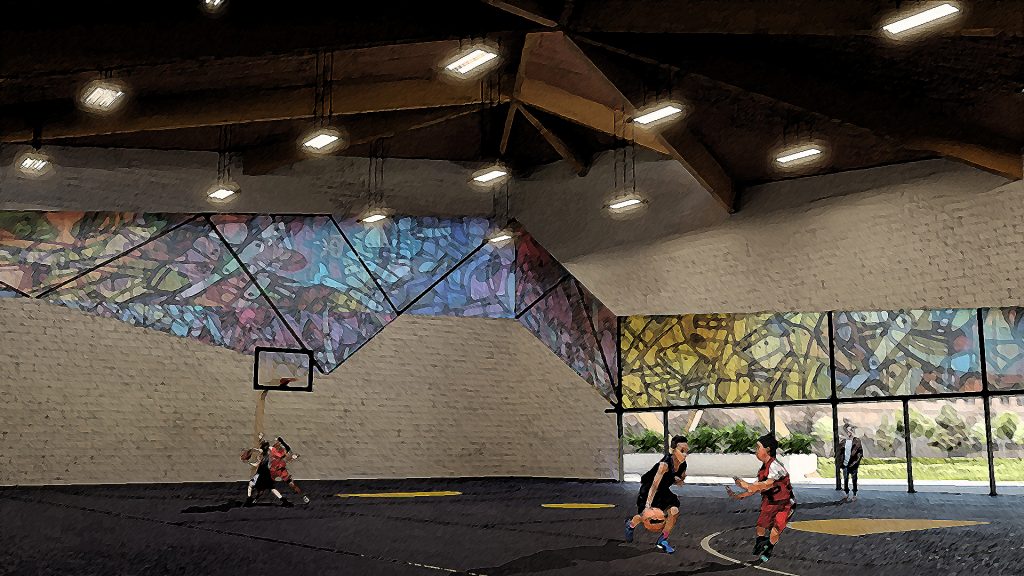

Sonia Xu
Sandy Hill Community Centre
The central idea of the design was a long glass bridge, linking the current main entrance to the new gym. Elements align longitudinally on either side of the bridge, creating opportunity for movement of light, views, and people across them.
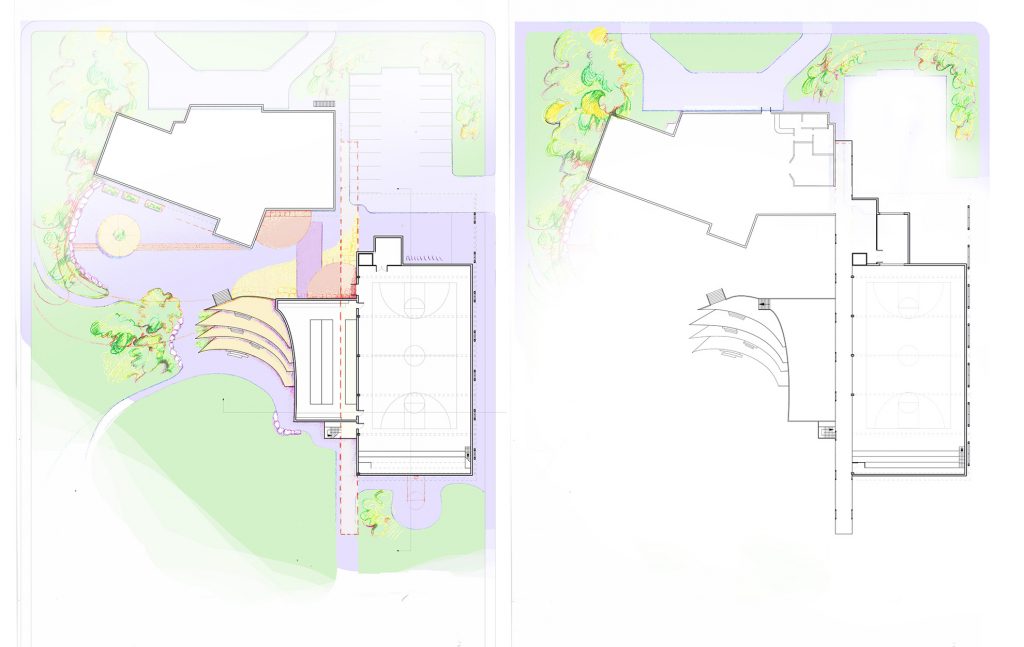

Helen Wang
Sandy Hill Community Centre
The project focused on producing new by recalling old. The proposed gymnasium draws on the rotation of the existing one. It adapts the original hipped roof to accommodate a skylight and illuminate the gym with north daylighting. The original brickwork is carried over but given the character of transparency in the addition.
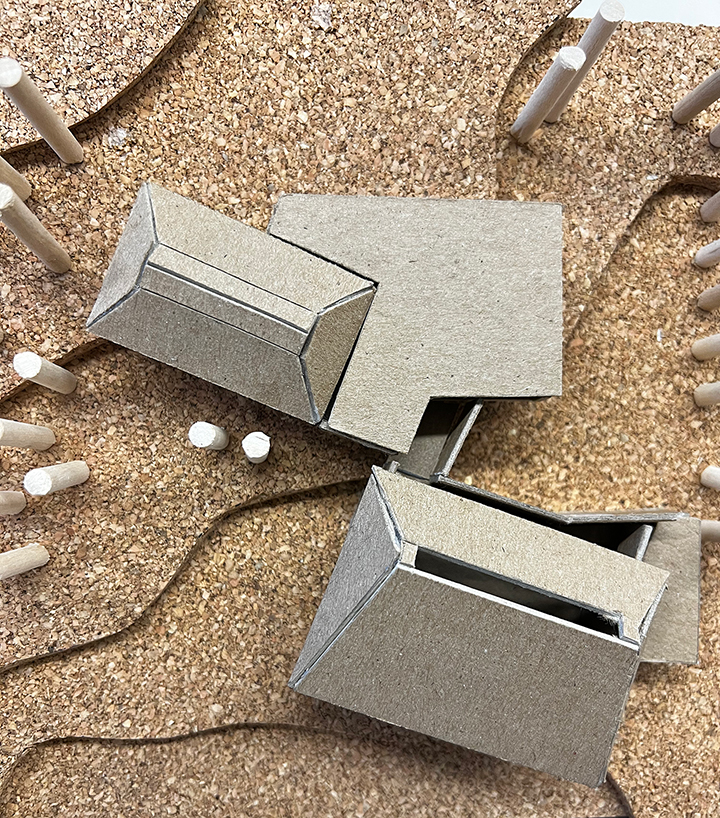
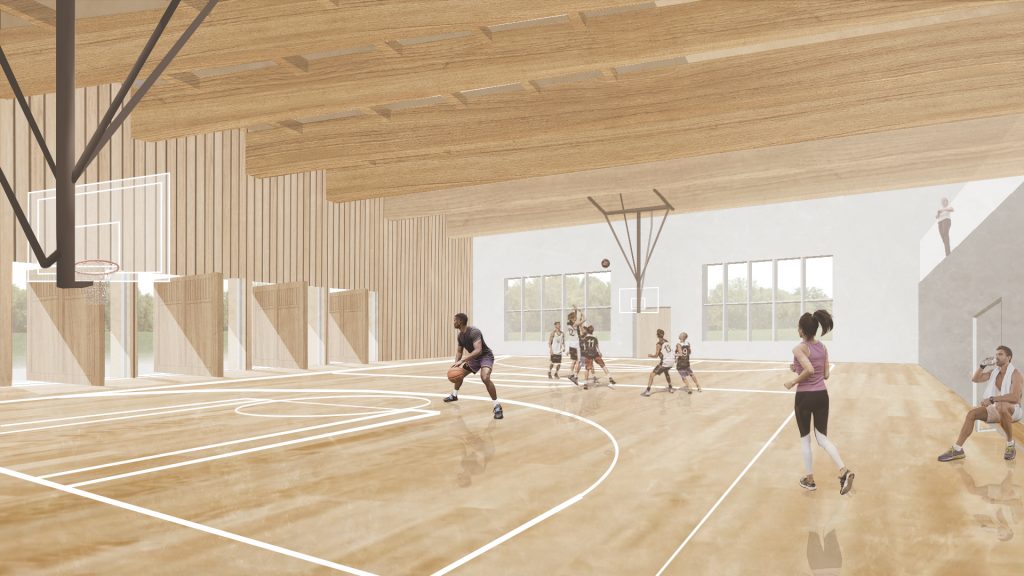
George Gialouris-Tsivikas
Sandy Hill Community Centre
Concrete piloti elevate the addition to meet the existing structure at grade. A glass passageway connects the two buildings. Within, a regulation-sized basketball court is bathed in natural light. Ramps connect to a central catwalk, that hovers above the ground, creating a courtyard-like sense of embrace, while allowing access to the park.

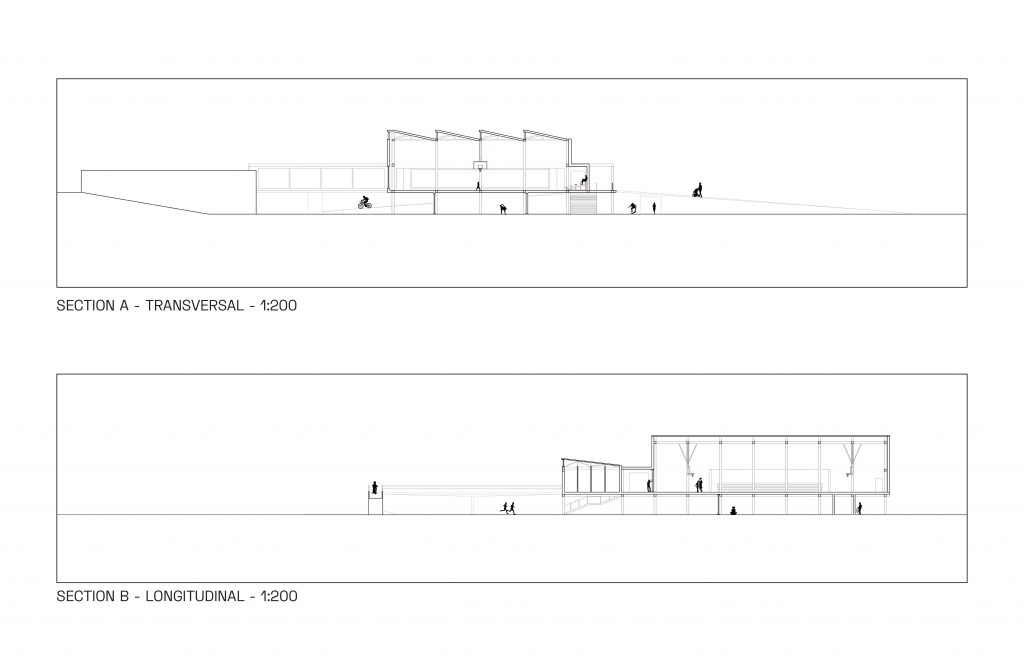
Marco Ferrari
Sandy Hill Community Centre
The datum lines of the original community centre together with large truss members define the architecture of the gymnasium addition. The link between the old and new volumes acts as a multi-purpose gathering area. Fitted with skylights and large rotating doors, it creates an indoor-outdoor dialogue between link, sunken courtyard, and lower entrance.

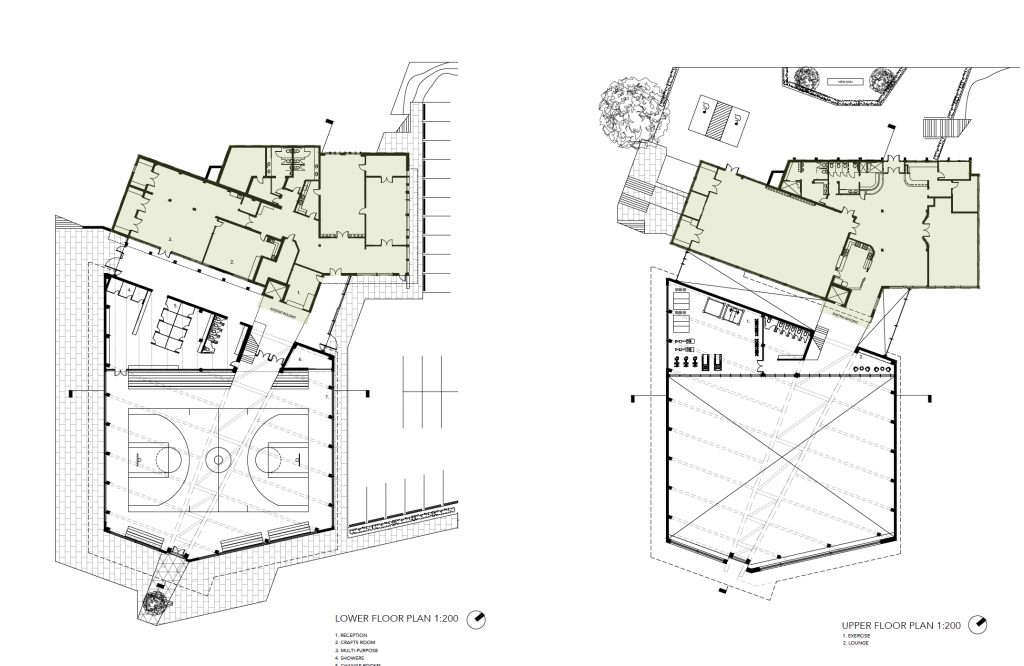
Jessica Villarasa
Champagne Bath
The project aims to preserve the heritage of the original building while adding various aquatic amenities to attract more people. The building proposes curved surfaces to mimic water flow, translating to the flow between and within spaces. This allows users to circulate through the building as a body moves through the water.
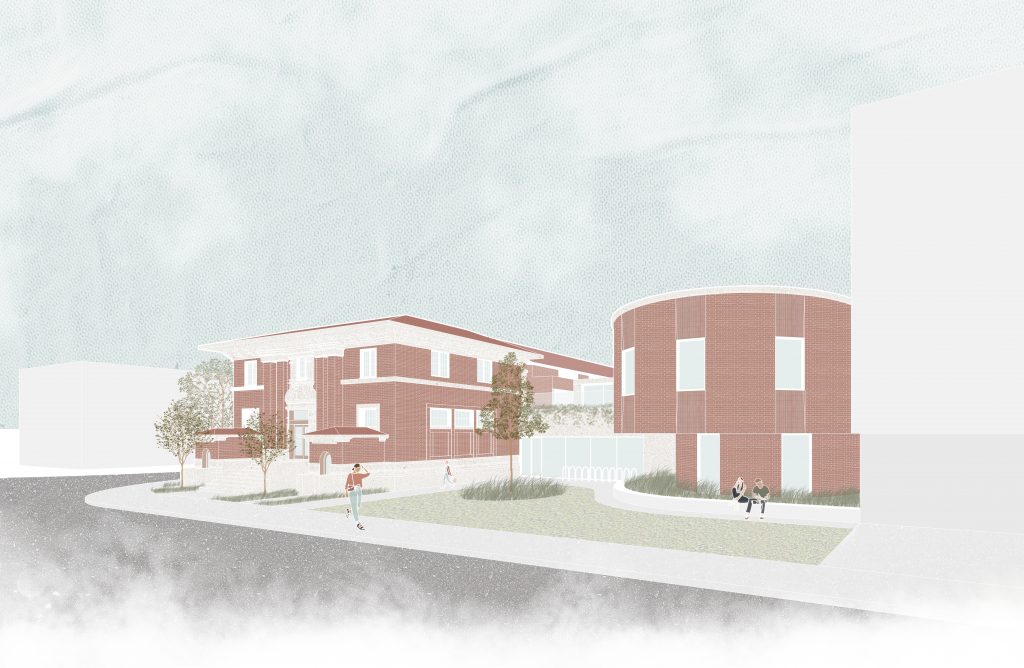

Oksana Tkach
Champagne Bath
This project creates a large, bright, and open indoor space, with multiple areas to sit and enjoy views of the pool and street life. A glazed rectangular addition allows natural light, even to the below-grade gym. The project added a park and splash pad for children in the sunniest outdoor area.
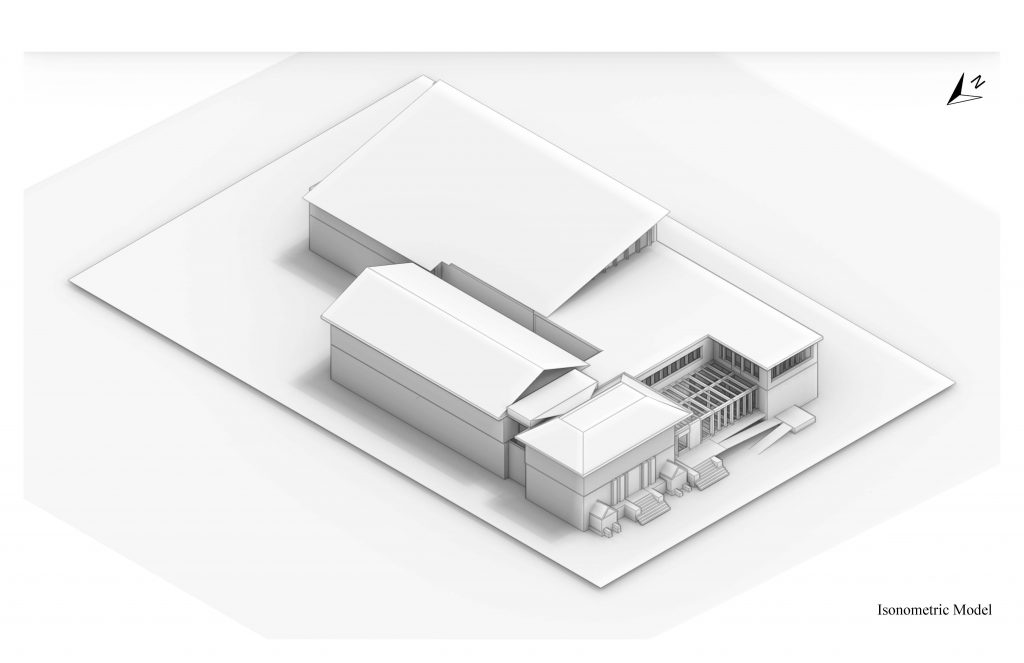
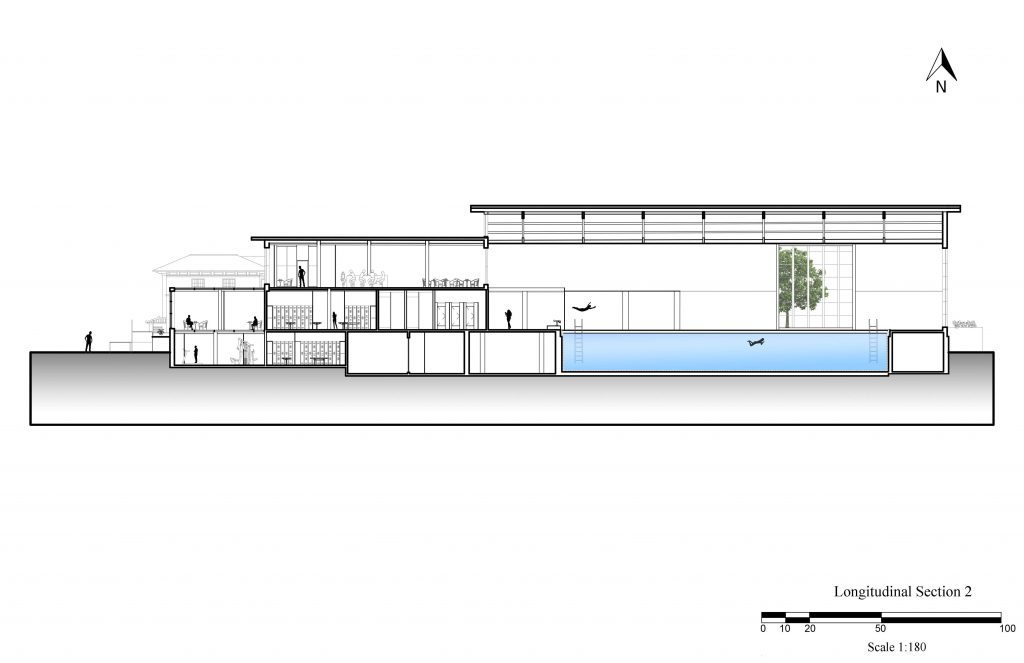
Alyssa Pangilinan
Champagne Bath
The addition embraces existing features: the bricks, gable roofs, trusses, and pool. A glazed pitched roof separates the addition and existing building with a skylight. The exposed ceiling honours the old and new trusses and level changes between existing and new pools. The brick façade seamlessly continues around the whole building.

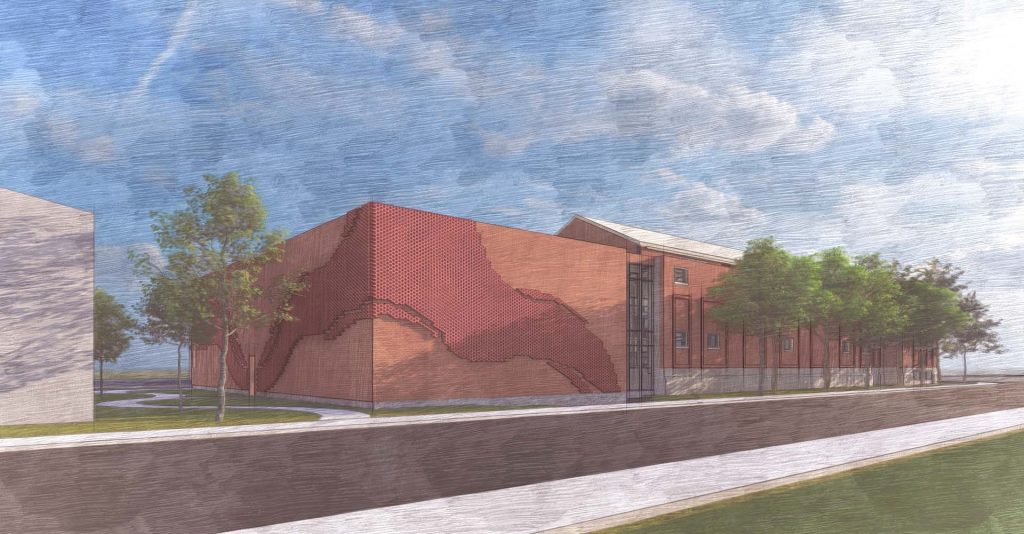
Emilio Hechanova
Champagne Bath
The main idea for the intervention was to emphasize the characteristics of the original building by expanding upon pre-existing elements while also introducing new ideas which would benefit the community.
